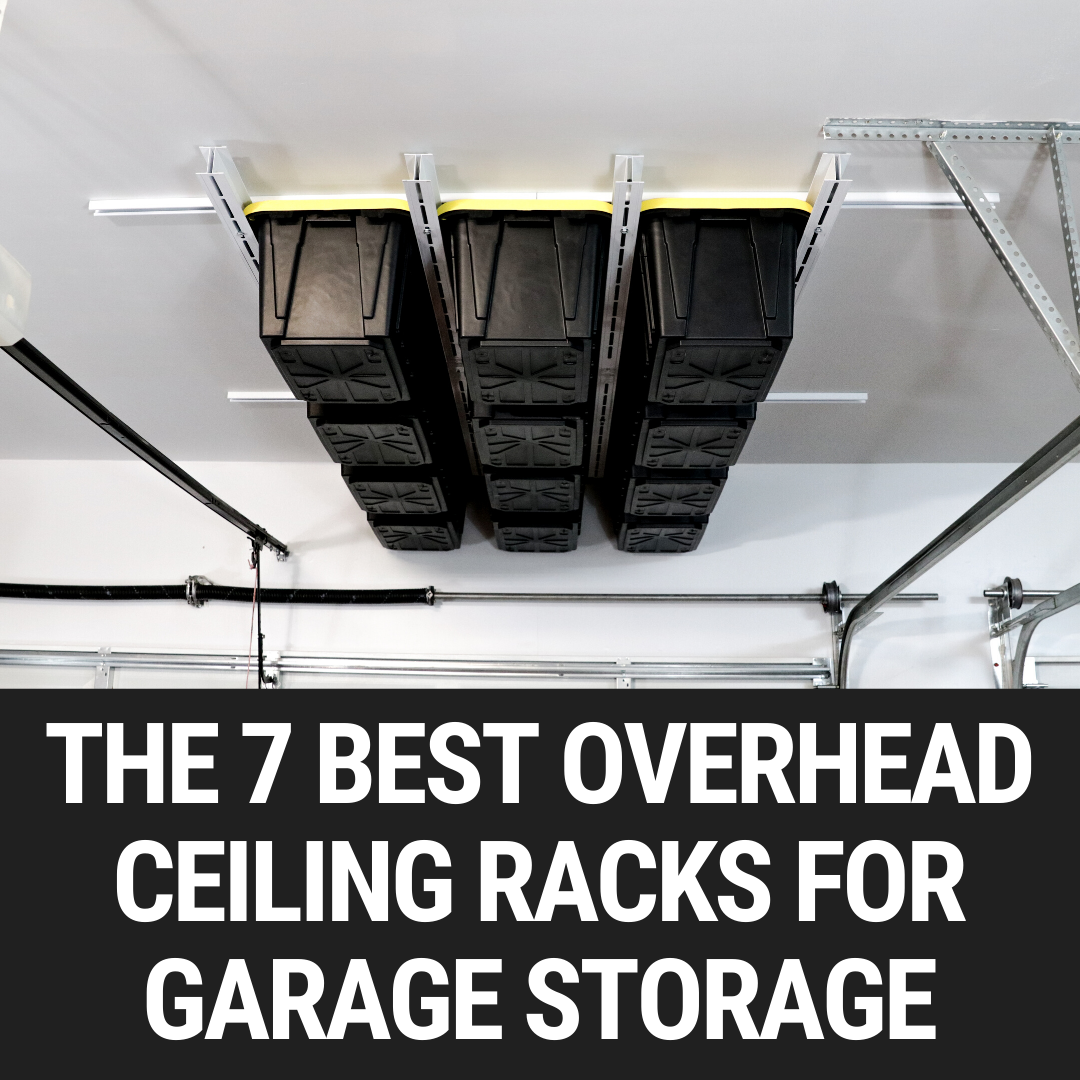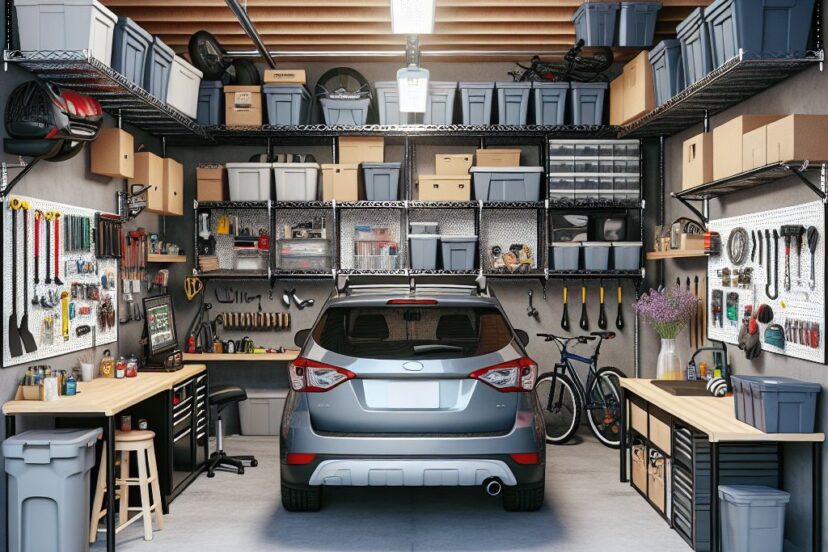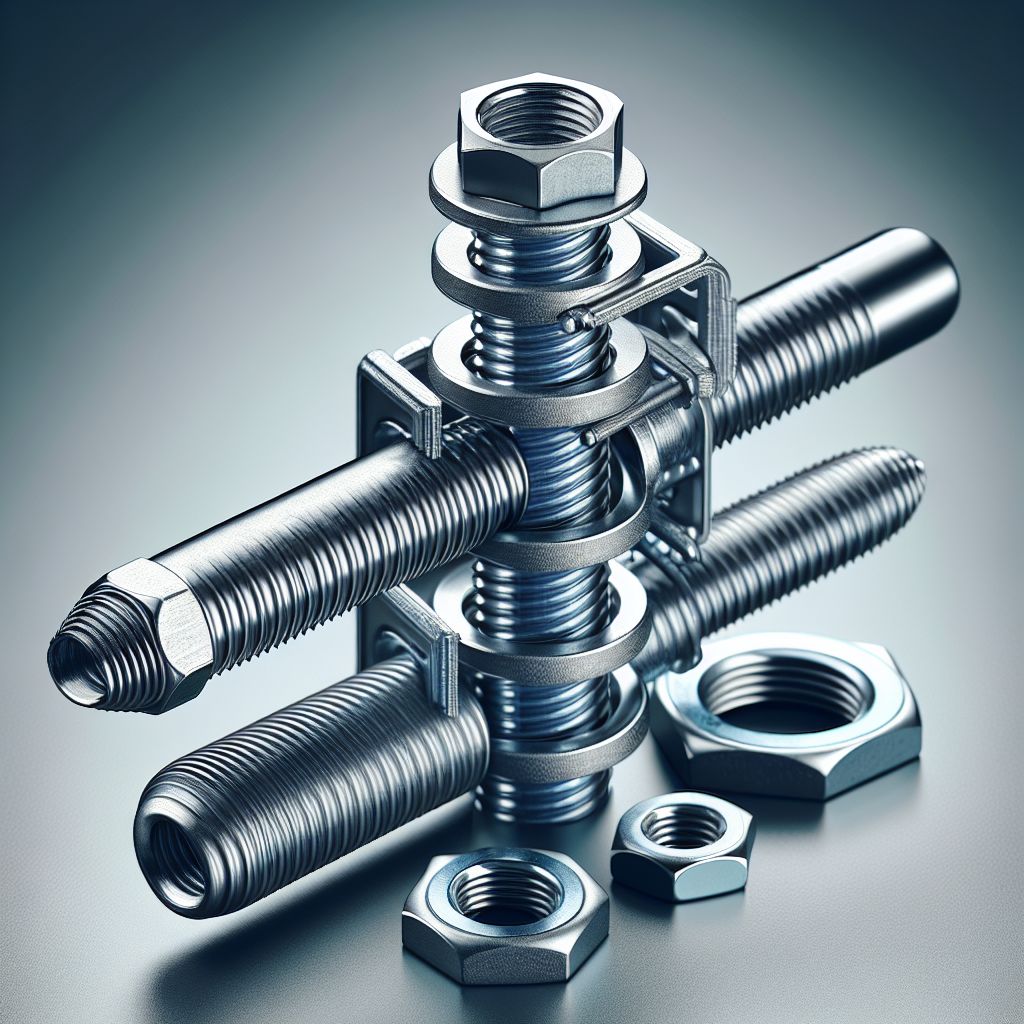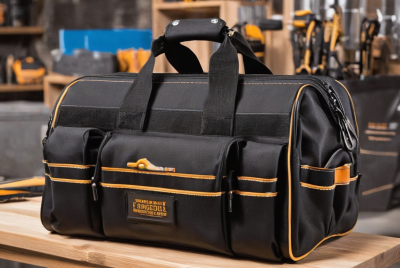Ceiling Storage Racks Usage Tips, Maintenance Guide & Best Practices
Key Takeaways
-
Ceiling storage racks can maximize unused vertical space, keeping your floors clutter-free.
-
Choosing the right type of ceiling storage rack depends on your specific storage needs.
-
Proper installation is crucial for safety and efficiency; consider professional help if unsure.
-
Regular maintenance, including inspections and adjustments, ensures longevity and safety.
-
Weight distribution and organized storage methods enhance accessibility and safety.
Benefits of Ceiling Storage Racks
Ceiling storage racks offer numerous benefits for home organization. They are particularly useful for maximizing unused vertical space. By utilizing the ceiling, you can free up valuable floor space, making your home feel more open and less cluttered.
Maximizing Unused Vertical Space
One of the primary advantages of ceiling storage racks is their ability to make use of vertical space that would otherwise go unused. This is especially beneficial in areas like garages, basements, and attics, where floor space is often at a premium. By storing items overhead, you can keep them out of the way yet easily accessible when needed.
Consider this example: In a typical garage, the floor space might be cluttered with tools, sports equipment, and seasonal items. Installing ceiling storage racks allows you to store these items overhead, freeing up the floor for other uses, such as parking your car or creating a workspace.
Keeping Floors Clutter-Free
Besides maximizing vertical space, ceiling storage racks help keep floors clutter-free. This is crucial for maintaining a clean and organized home. When items are stored off the floor, cleaning becomes easier, and the risk of tripping over clutter is minimized.
Imagine walking into your basement and seeing a clear, open floor instead of piles of boxes and bins. Ceiling storage racks make this possible by providing a designated space for items that might otherwise be left on the floor.
Choosing the Right Ceiling Storage Racks
Assessing Your Storage Needs
Before choosing a ceiling storage rack, it’s essential to assess your storage needs. Consider the items you plan to store and their weight. This will help you determine the type and size of the rack that will best suit your needs.

“Garage Storage Systems – Garage Door …” from www.garagedoornation.com
Make a list of items you want to store and categorize them by weight and size. For example, lightweight items like holiday decorations can be stored on overhead shelves, while heavier items like bikes or kayaks might require more robust hanging racks.
Types of Ceiling Storage Racks
There are several types of ceiling storage racks to choose from, each with its own set of advantages. Understanding these types will help you make an informed decision.
Fixed Racks
Fixed racks are permanently mounted to the ceiling and provide a stable storage solution. They are ideal for items that you don’t need to access frequently. Fixed racks are generally more affordable and easier to install than other types of racks.
Adjustable Racks
Adjustable racks offer more flexibility as they can be moved up and down or side to side. This makes them ideal for spaces where storage needs may change over time. Adjustable racks are perfect for storing items of varying sizes and weights.
Motorized Racks
Motorized racks are the most advanced type of ceiling storage racks. They can be raised and lowered with the push of a button, making them incredibly convenient. Motorized racks are perfect for storing heavy items, as they eliminate the need for ladders or step stools. However, they are also the most expensive option.
Installing Ceiling Storage Racks
Professional vs. DIY Installation
When it comes to installing ceiling storage racks, you have two main options: professional installation or DIY. Each has its pros and cons.
-
Professional Installation: Ensures that the racks are installed correctly and safely. Professionals have the necessary tools and expertise to handle any challenges that may arise.
-
DIY Installation: Can be more cost-effective but requires a certain level of skill and knowledge. If you’re confident in your abilities, DIY installation can be a rewarding project.
Tools and Materials Needed
Whether you choose professional or DIY installation, certain tools and materials are essential for the job. Here’s a list of what you’ll need:
For a detailed guide, check out our motorized overhead garage storage rack setup installation guide.
-
Drill and drill bits
-
Screwdriver
-
Stud finder
-
Level
-
Measuring tape
-
Lag bolts and screws
-
Ceiling storage rack kit
Preparing the Ceiling
Before you begin mounting your ceiling storage racks, it’s crucial to prepare the ceiling properly. Start by locating the ceiling joists using a stud finder. Joists are the wooden beams that provide structural support, and it’s essential to mount your racks to these for maximum stability. Mark the positions of the joists with a pencil, ensuring they align with where you plan to install the racks.
Next, clear the area of any obstacles or items that might get in the way during installation. This includes moving any furniture or tools and ensuring you have a clear path to work. Safety goggles and gloves are recommended to protect yourself from dust and debris during this process.
Mounting the Racks
With your ceiling prepared, you can now begin mounting the racks. Follow these steps for a secure installation:
-
Measure and Mark: Measure the dimensions of your storage rack and mark the corresponding points on the ceiling. Ensure these points align with the joists you marked earlier.
-
Drill Pilot Holes: Using a drill, create pilot holes at the marked points. These holes will guide the screws and prevent the wood from splitting.
-
Install Brackets: Attach the mounting brackets to the ceiling using lag bolts and a screwdriver. Make sure the brackets are level and securely fastened to the joists.
-
Attach the Rack: Once the brackets are in place, attach the storage rack according to the manufacturer’s instructions. Double-check that all connections are tight and secure.
Safety Precautions
Safety should always be a top priority when installing ceiling storage racks. Here are some key precautions to follow:
For more detailed guidance on installation, check out this ultimate guide to overhead storage.
-
Use the Right Tools: Ensure you have the appropriate tools for the job, including a sturdy ladder, drill, and safety gear.
-
Follow Weight Limits: Adhere to the weight limits specified by the manufacturer to prevent overloading the racks.
-
Double-Check Stability: Before storing any items, double-check that the racks are securely mounted and stable.
-
Get Help if Needed: If the racks are large or heavy, enlist the help of a friend or professional to assist with the installation.
Best Practices for Using Ceiling Storage Racks
Using ceiling storage racks effectively requires careful planning and organization. Here are some best practices to help you get the most out of your storage solution.
Weight Distribution Tips
Proper weight distribution is crucial for the stability and safety of your ceiling storage racks. Here are some tips to ensure even weight distribution:
-
Spread Out Heavy Items: Avoid placing all heavy items in one area. Distribute them evenly across the rack to balance the load.
-
Use the Center: Place the heaviest items in the center of the rack, where the support is strongest.
-
Light Items on the Edges: Store lighter items on the edges to prevent the rack from sagging.
Organizing Stored Items
Keeping your stored items organized not only makes them easier to find but also maximizes the available space. Here are some tips for organizing your ceiling storage racks:
-
Group Similar Items: Store similar items together to make them easier to locate. For example, keep all holiday decorations in one area and sports equipment in another.
-
Use Clear Bins: Clear bins allow you to see what’s inside without having to open them, saving time and effort.
-
Label Your Storage: Clearly label each bin or box with its contents. This helps you find items quickly and reduces the risk of misplacing things.
Using Clear Bins
Clear bins are an excellent choice for ceiling storage racks because they allow you to see the contents without having to open each bin. This makes it easy to find what you need quickly. When choosing clear bins, opt for ones with sturdy lids to protect your items from dust and debris.
Labeling Your Storage
Labeling is a simple yet effective way to keep your storage organized. Use a label maker or permanent marker to label each bin or box with its contents. For added convenience, consider color-coding your labels based on categories, such as red for holiday decorations and blue for sports equipment.
Accessibility and Safety
Ensuring your stored items are accessible and safe is essential for a functional storage system. Here are some tips to achieve this: For comprehensive guidance, you can refer to this garage storage organizing guide.
-
Create a Ladder System: If your ceiling is high, use a ladder system to access your storage racks safely.
-
Use Hooks and Hangers: Hooks and hangers can be used to store items like bikes and tools, keeping them off the floor and easily accessible.
-
Regularly Inspect Racks: Periodically check your storage racks for any signs of wear or damage to ensure they remain safe and secure.
Creating a Ladder System
If you have high ceilings, a ladder system can make accessing your ceiling storage racks much easier. Consider using a folding ladder that can be easily moved around the room. Make sure the ladder is stable and can support your weight safely. For more detailed instructions, check out this installation guide.
Using Hooks and Hangers
Hooks and hangers are versatile tools that can help you maximize your ceiling storage. Install hooks on the sides of your racks to hang items like bikes, tools, or garden equipment. This not only keeps these items off the floor but also makes them easily accessible when needed.
Maintenance Guide for Ceiling Storage Racks
Regular maintenance is essential to ensure the longevity and safety of your ceiling storage racks. Follow these guidelines to keep your storage system in top condition, and for setup instructions, refer to this installation guide.
|
Maintenance Task |
Frequency |
Details |
|---|---|---|
|
Inspect for Damage |
Monthly |
Check for any signs of wear, rust, or damage to the racks and brackets. |
|
Clean Racks |
Quarterly |
Wipe down the racks with a damp cloth to remove dust and debris. |
|
Tighten Bolts |
Annually |
Ensure all bolts and screws are tight to maintain stability. |
Regular Inspections
Conduct regular inspections of your ceiling storage racks to identify any potential issues early. Look for signs of wear, such as rust, cracks, or loose bolts. Addressing these issues promptly can prevent more significant problems down the line.
Cleaning and Upkeep
Keeping your storage racks clean is essential for maintaining their condition. Wipe down the racks with a damp cloth every few months to remove dust and debris. This not only keeps them looking good but also helps prevent the buildup of dirt that can lead to wear and tear.
Cleaning the racks regularly also gives you a chance to inspect them for any signs of damage. Pay close attention to the mounting brackets and bolts, as these are critical for the stability of the racks.
Tightening and Adjustments
Over time, the bolts and screws holding your ceiling storage racks in place can loosen. Regularly tightening these fasteners is essential to maintain the stability and safety of your storage system. An annual check should suffice, but if you notice any wobbling or instability, address it immediately.
Adjustments may also be necessary if your storage needs change. For instance, if you find that you need more space or that the current configuration isn’t working, don’t hesitate to reconfigure the racks. Adjustable racks are particularly beneficial in this regard, as they can be easily modified to suit your changing needs.
Common Issues and Troubleshooting
Even with proper installation and maintenance, you may encounter some common issues with ceiling storage racks. Knowing how to troubleshoot these problems can save you time and ensure your storage system remains functional and safe.
Overloading Issues
One of the most common problems is overloading the racks. Overloading can compromise the stability of the racks and pose a safety risk. Here’s how to identify and prevent overloading by following this installation guide.

Identifying Overload Signs
Signs of overloading include sagging racks, creaking noises, and visible stress on the mounting brackets. If you notice any of these signs, it’s crucial to remove some of the weight immediately to prevent further damage. For a comprehensive guide on installation and maintenance, check out our motorized overhead garage storage rack setup guide.
Preventing Overloading
To prevent overloading, always adhere to the weight limits specified by the manufacturer. Distribute weight evenly across the racks and avoid placing all heavy items in one area. Regularly check the weight distribution and make adjustments as needed.
Loose or Wobbly Racks
If your racks feel loose or wobbly, it could be due to loose bolts or an improper installation. Tighten all bolts and screws, and ensure that the racks are securely fastened to the ceiling joists. If the problem persists, you may need to reinforce the mounting brackets or consult a professional for assistance. For a comprehensive guide, check out this motorized overhead garage storage rack setup.
Damage from Environmental Factors
Environmental factors such as humidity and temperature changes can affect the integrity of your ceiling storage racks. Rust and corrosion are common issues in humid environments. To mitigate this, consider using rust-resistant materials and regularly inspecting your racks for signs of corrosion.
Conclusion
Ceiling storage racks are a fantastic solution for maximizing vertical space and keeping your home organized. By choosing the right type of rack, installing it properly, and maintaining it regularly, you can ensure a safe and efficient storage system. Remember to distribute weight evenly, keep your stored items organized, and regularly inspect and clean your racks to keep them in top condition.
Frequently Asked Questions (FAQ)
How much weight can ceiling storage racks support?
The weight capacity of ceiling storage racks varies depending on the type and manufacturer. Generally, fixed racks can support between 250 to 600 pounds, while motorized racks may have different capacities. Always check the manufacturer’s specifications for exact weight limits.
Can I install ceiling storage racks myself?
Yes, you can install ceiling storage racks yourself if you have the necessary tools and skills. However, if you’re unsure or if the racks are particularly large or heavy, it’s advisable to seek professional help to ensure a safe and secure installation.
What items are best stored in ceiling storage racks?
Ceiling storage racks are ideal for storing a variety of items, including seasonal decorations, sports equipment, tools, and bulky items like kayaks or bikes. Lightweight items can be stored on overhead shelves, while heavier items should be placed on more robust hanging racks.
How often should I inspect my ceiling storage racks?
Regular inspections are essential to ensure the safety and stability of your ceiling storage racks. Conduct a thorough inspection at least once a month, and perform more detailed checks annually. Look for signs of wear, rust, or damage, and address any issues promptly to maintain the integrity of your storage system.
*We may earn a commission for purchases made using our links. Please see our Disclosure to learn more.




